After cutting down a laurel tree, the stump and roots are usually left over. Do you want to get rid of them? Don't worry. To help you, we researched how to get rid of them and have information to share.
Depending on their location, size, and condition, you have multiple ways to remove a laurel stump and roots. If you want to save time and effort, hire an arborist.
Otherwise, you can either apply chemicals or perform manual labor. Here are practical tools and techniques to do it yourself.
- Herbicide
- Bleach
- Rock or Epsom salt
- Ring-barking
- Burning
- Stump grinding
- Digging up
You might think these parts of the laurel tree are already dead, but usually, they are still alive. We will have a detailed discussion on getting rid of them in this post.
We'll also explore other related topics, such as alternative hedges and the dangers of laurel. Keep on reading to learn more.
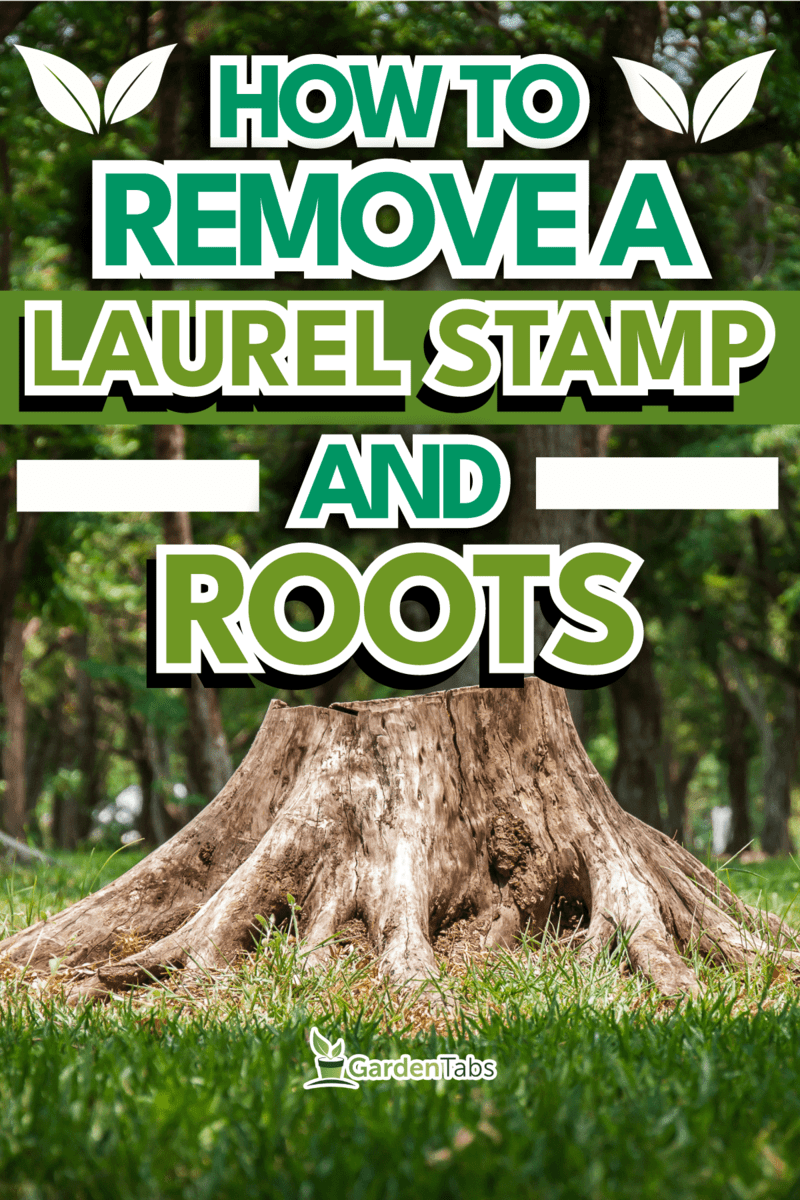
Laurel Stump And Roots Removal
After a few days, you may have seen sprouts within the stump despite pruning the branches, trunk, and leaves. Here are some solutions you can try to address this concern:
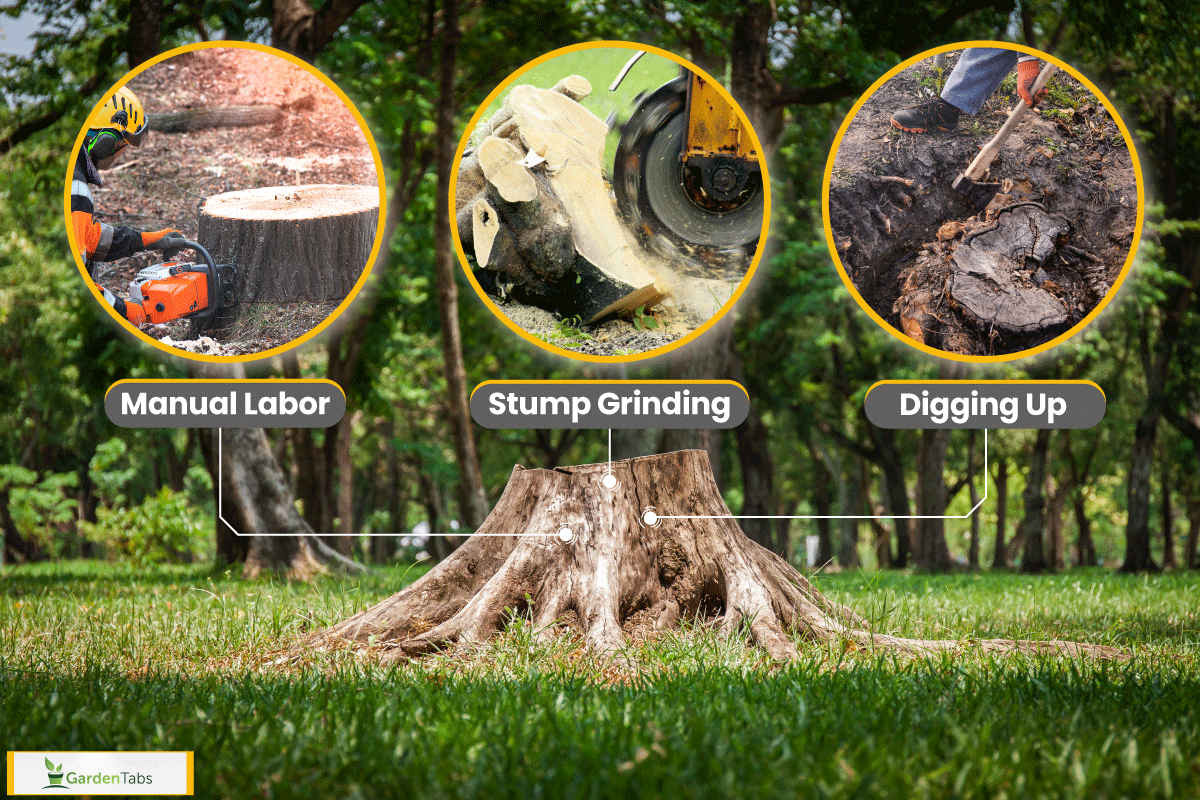
Chemical Treatment
These affordable materials will kill laurel roots and stumps, but they may take weeks or months to take effect well. Even so, incorporating these chemicals will prep the remaining parts before discarding them.
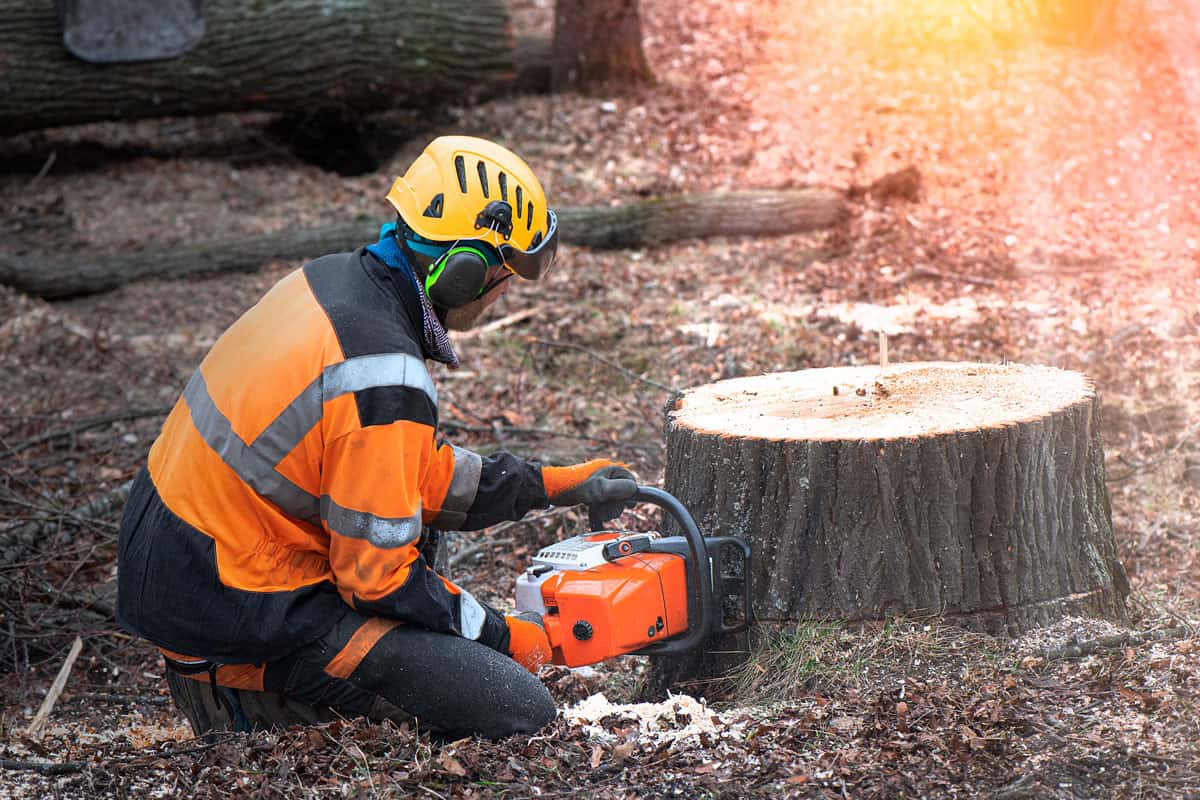
Herbicide
One of the excellent ways to kill the stump is by applying herbicide. It comes in several varieties.
The popular types include dicamba, triclopyr, 2, 4-D amine with picloram, imazapyr, and glyphosate. You can explore the combinations of these herbicides in the market.
Read the label's instructions to prevent the sprouting of branches. For instance, basal bark spray is a standard method for herbicides. This means the solution must penetrate the tree bark.
Click here to see this stump remover on Amazon.
Bleach
Pour bleach into the pre-drilled holes in the stump until it depletes the nutrients. The holes must be between five and ten inches. Avoid spilling it out in the surrounding area. Likewise, do not splatter it on your skin.
Rock Or Epsom Salt
Pour rock salt into the 12-inch drilled holes regularly, then cover them for a few weeks.
This will completely dry the stump. Along with the roots, you can split it up more easily than when it is still fresh.
Manual Labor
In contrast, let us explore natural methods to finish this project without waiting time.
Ring-bark
Ring-barking or girdling involves stripping the tree bark circumference and damaging its elements, such as phloem, cambium, and xylem. These components are crucial to energy production. Without them, the stump will be dead.
Burning
Burning the remaining parts does not require special equipment. Ignite it with charcoal for less toxic fumes. However, you must check your local regulations for controlled burns and observe safety measures.
Stump Grinding

A stump grinder is a handy tool for arborists. It is the most efficient technique to accomplish this task, especially for those with several stumps.
This machine will turn the stump into small wood chips in a few minutes.
Although the laurel roots will remain, they will soon die because of the stump removal. You can repurpose the chips by mixing them in your mulch, compost, and raised beds.
See this gas-powered stump grinder on Amazon.
Digging Up
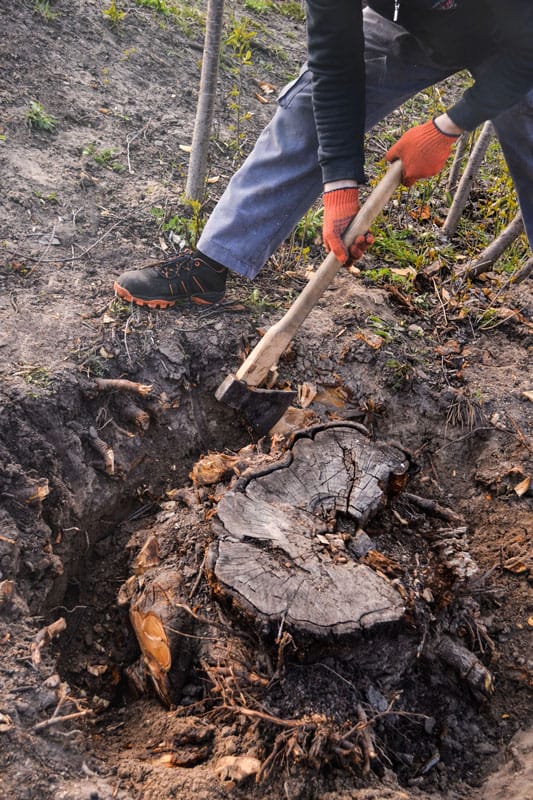
This is the most common yet labor-intensive way on the list. Before digging up, maintain the stump level with the ground.
You will either need a mattock or a backhoe. The backhoe is ideal for pulling up laurels with large-diameter stumps and deeper root systems.
The mattock or pick ax is a traditional hand tool for small-diameter stumps. If you opt for the mattock, it is best to use a wedge when splitting the stump into sections.
Click here to see this steel wedge on Amazon.
You can watch this clip to see how valuable a wedge is:
Why Do You Need To Remove A Tree Stump?
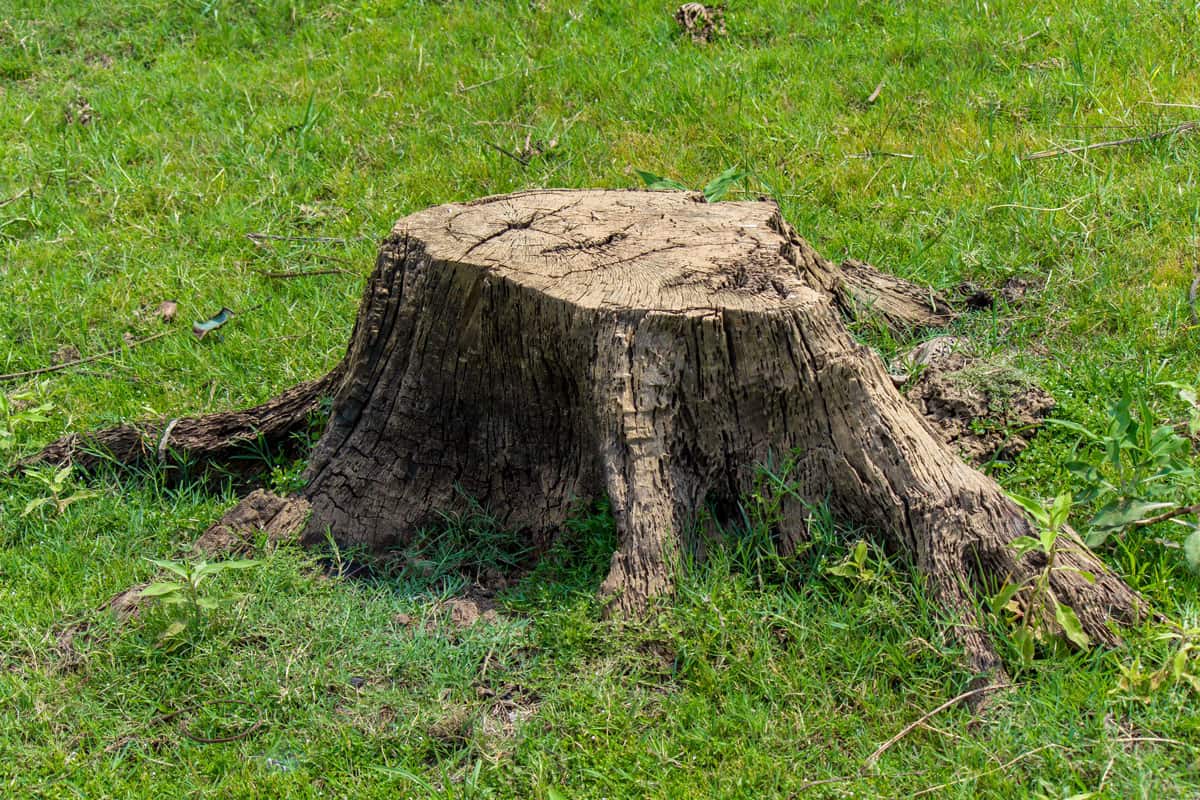
In addition to its continuous growth, the leftover stump creates many problems. Hence, you must remove it immediately.
- Brings unaesthetic appeal
- Decreases the value of your property
- It becomes a breeding ground for pests (ants, beetles, termites)
- Carries bacteria or disease
- Trips children
- Serves as debris during lawn mowing
Is It A Good Idea To Try Tree Blasting?
Using explosives and tree blasting is another way to remove hazardous trees, especially in the wilderness. It applies to trees that you cannot use chainsaws to cut.
According to the U.S. Forest Service, certified blasters can only carry out this hazardous approach with a permit. Despite that, below are the benefits of tree blasting.
- Multiple trees will fall in one go.
- Blasters will spend less time.
- It produces natural-looking stumps.
- It is safer than a chainsaw, even though trees will land in any direction.
What Is Stump Harvesting?
Stump harvesting has been a practice in Europe since the 1970s. Stumps serve as natural products for fueling biomass power stations. However, it leads to long-term damage.
It reduces the soil nutrients and creates imbalanced biodiversity, especially in slopes and rivers.
Do Laurels Have Deep Roots?

Upon maturation, the roots of the laurel shrub will be at least 2 feet deep. They spread more broadly in loam than hard or clay soils, causing them to intertwine and grow stronger.
For these reasons, you might find it delicate to dislodge them.
Are Laurel Roots A Problem?
Given that the laurel root is the energy source, its spread has the same ratio of foliage thickness. The larger your hedge, the more extensive the root system will be.
Most laurels do not cause problems for the foundation of a house if they are within a reasonable stature. However, it is susceptible to root rot when planted in damp areas.
Aside from the roots, laurel's foliage is prone to contracting plant conditions: shot hole, leaf drop, frost damage, and powdery mildew.
How Do You Prune A Laurel Tree?
A laurel will take up your landscape space because its growth rates range from 12-15 feet per year. Hence, pruning at least once a year is crucial, regardless of species. This process will maintain its ideal size and prevent the risk of infections.
Pruning should take place before growth or right after it. Although you can prune a laurel tree in any season, the winter months are not ideal because of the frost damage it will cause to its newly trimmed edges.
The rule of thumb for pruning laurel is to remove the diseased and leaning stems and leaves before the end of spring. The subsequent months will be warmer, making them more conducive to speedy healing and regrowth of said parts.
A hand pruner is the most recommended trimming tool for small laurels. Using one hand, these scissors are strong enough to snip off the branches and leaves. Meanwhile, a hedge trimmer is excellent for the larger ones.
Click here to see this secateur on Amazon.
Pruning Laurel Bushes Vs. Hedges
Whether you have laurel bushes or hedges, they need regular and proper care to stay in shape. Seasonal pruning is appropriate for bushes. To start, cut one part of the tangled branches.
Then, chop the thinner ones. Lastly, shorten the flowering shoots by a third.
Remember to trim consistently at a 45-degree angle. In contrast, shaping hedges requires more frequency, so they will not become unruly. Thus, the ideal schedule is every month or six weeks.
Place string to set your desired level. Begin with the highest hedge. Afterward, shear the rest of the hedge, including the sides, to make all the surfaces even.
Is Laurel Poisonous To Dogs?
Most laurel parts are poisonous, whether the mountain (Kalmia latifolia) or cherry (Prunus laurocerasus) laurel.
When eaten in a certain quantity, its berries, leaves, and stems are dangerous to dogs and herbivores such as horses and sheep.
This is because laurel emits a toxic gas, hydrogen cyanide. Although it smells like bitter almonds, this colorless chemical is a fire hazard and eventually fatal.
Watch out for the signs of poisoning: shakiness, unusual sensitivity, seizures, breathing difficulty, bubbling mouth, or excessive salivating. If your pet experiences these common symptoms, seek help from your veterinarian or local animal poison control center.
For these reasons, it is best to cultivate other species to create hedges or borders.
What Are The Alternatives For Laurel Hedges?
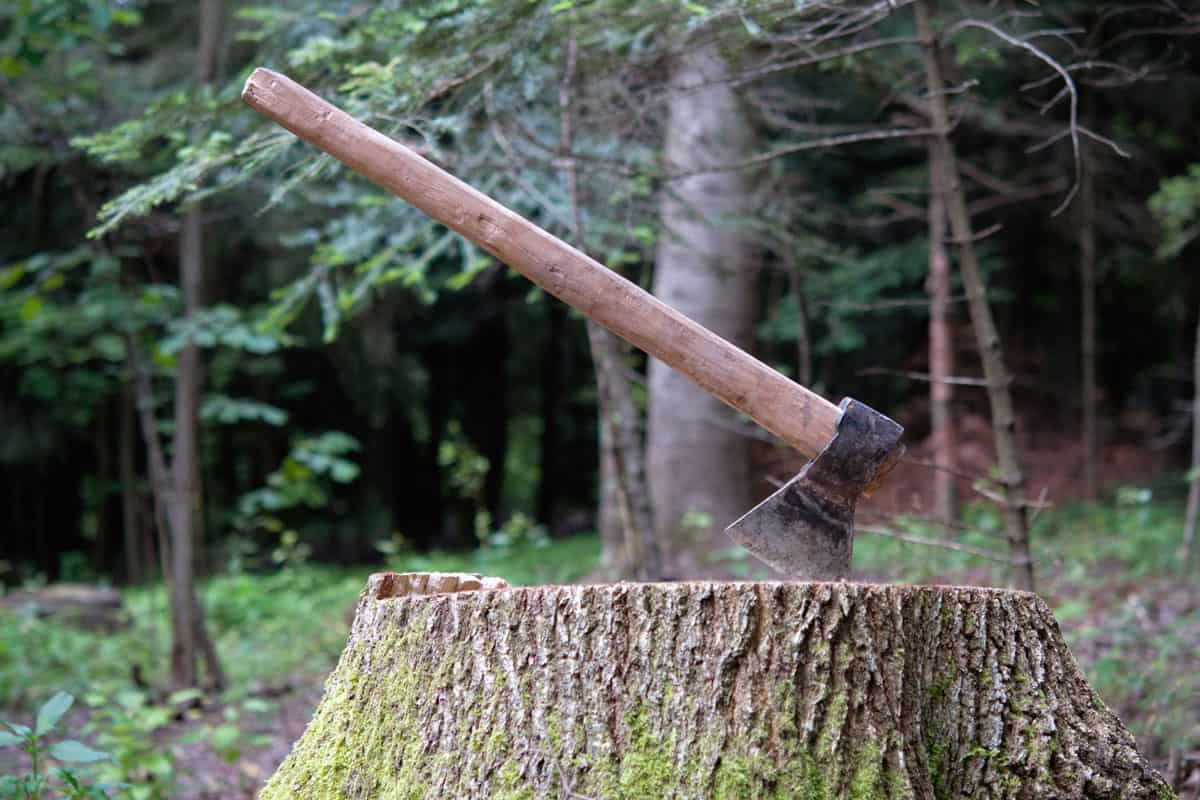
Consider these safer substitutes for laurel hedges that are also dense, evergreen, and fast-growing.
- Beech (Fagus)
- Boxwood (Buxus)
- Firethorns (Pyracantha)
- Green horizon (Griselinia littoralis)
- Lavender (Lavandula)
- Leyland cypress (Leylandii)
- Oleaster (Elaeagnus ebbingei)
- Photinia red robin (Photinia × fraseri)
- Viburnum Tinus (Lauristinus)
- Western red cedar (Thuja)
What Can You Do With Tree Stump Pieces?
Once you remove the tree stump pieces, you do not need to throw them if they are still in good condition. Instead, you can reuse them creatively for aesthetic and functional purposes.
Try these stylish yet simple ideas:
- Bird mini cabin
- Board games
- Candleholder
- Garden Decor
- Lighting fixture
- Outdoor fireplace
- Pathway stepping stones
- Planter
- Playpen
- Pot stand
- Rustic furniture
- Sculpture
Final Thoughts
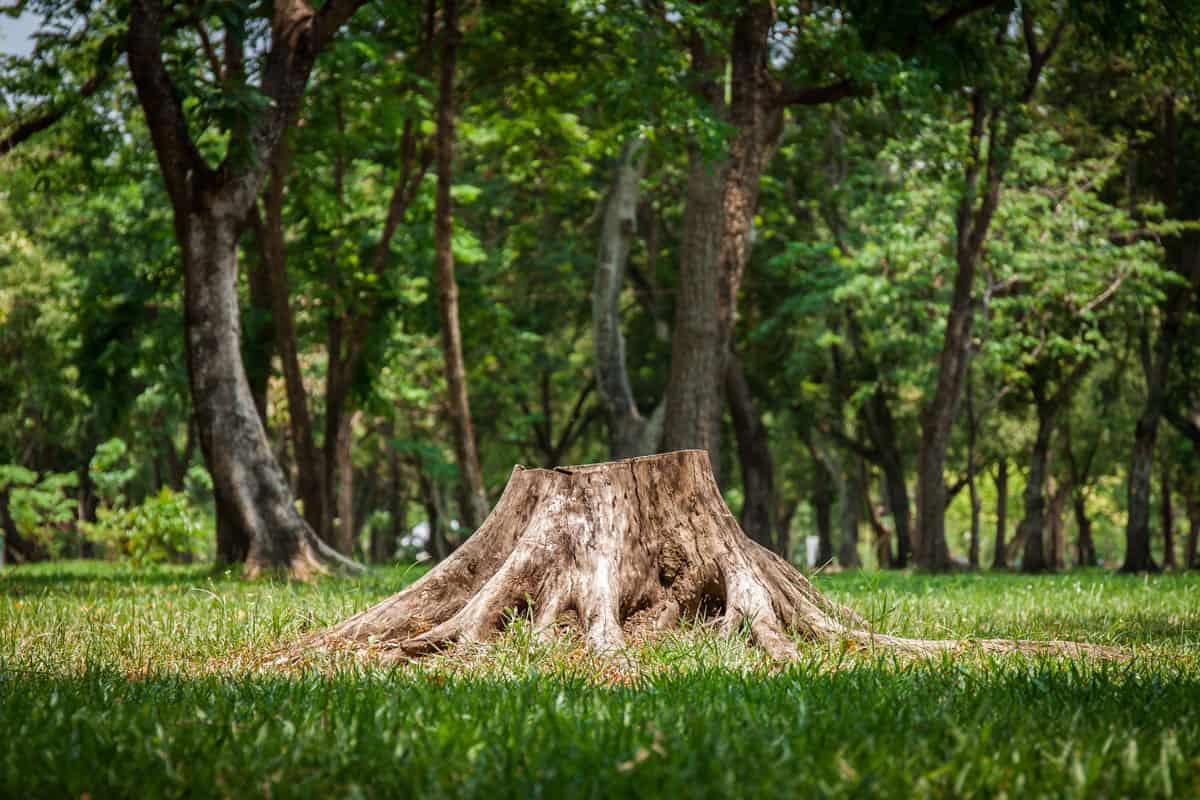
Although removing the laurel stump and roots is daunting, you will reap benefits from it. Regardless of your methods, you can repurpose the leftovers and regrow a good plant to maintain the privacy and beauty of your landscape.
Made it to the end? Check out these helpful related articles below!
How To Remove A Tree From Your Yard? [5 Crucial Things to Consider]
Are The Magnolia Tree Roots Invasive? [And How To Remove Them]




